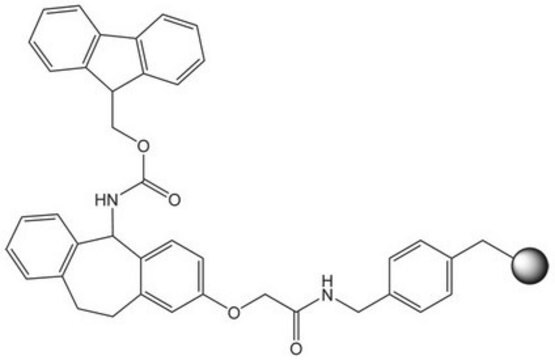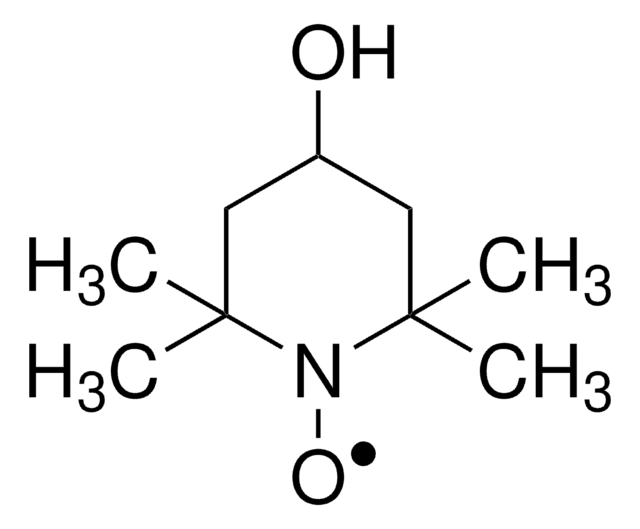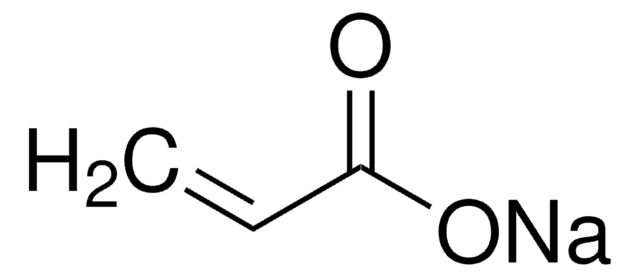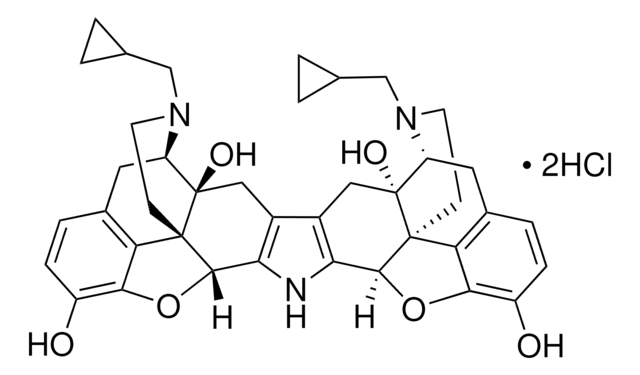G2791
Anti-Grb-2 antibody, Mouse monoclonal
clone GRB-232, purified from hybridoma cell culture
About This Item
Prodotti consigliati
Origine biologica
mouse
Livello qualitativo
Coniugato
unconjugated
Forma dell’anticorpo
purified from hybridoma cell culture
Tipo di anticorpo
primary antibodies
Clone
GRB-232, monoclonal
Stato
buffered aqueous solution
PM
antigen 24 kDa
Reattività contro le specie
rat, mouse, human
Concentrazione
~2 mg/mL
tecniche
immunocytochemistry: suitable
immunohistochemistry (formalin-fixed, paraffin-embedded sections): suitable
immunoprecipitation (IP): suitable
indirect ELISA: suitable
microarray: suitable
western blot: 1-2 μg/mL using a whole extract of cultured human acute T-cell leukemia Jurkat cells
Isotipo
IgG3
N° accesso UniProt
Condizioni di spedizione
dry ice
Temperatura di conservazione
−20°C
modifica post-traduzionali bersaglio
unmodified
Informazioni sul gene
human ... GRB2(2885)
mouse ... Grb2(14784)
rat ... Grb2(81504)
Categorie correlate
Descrizione generale
Monoclonal Anti-Grb2 reacts specifically with Grb2 (24 kDa).
Immunogeno
Applicazioni
Stato fisico
Nota sulla preparazione
Esclusione di responsabilità
Non trovi il prodotto giusto?
Prova il nostro Motore di ricerca dei prodotti.
Scegli una delle versioni più recenti:
Certificati d'analisi (COA)
Non trovi la versione di tuo interesse?
Se hai bisogno di una versione specifica, puoi cercare il certificato tramite il numero di lotto.
Possiedi già questo prodotto?
I documenti relativi ai prodotti acquistati recentemente sono disponibili nell’Archivio dei documenti.
Il team dei nostri ricercatori vanta grande esperienza in tutte le aree della ricerca quali Life Science, scienza dei materiali, sintesi chimica, cromatografia, discipline analitiche, ecc..
Contatta l'Assistenza Tecnica.






